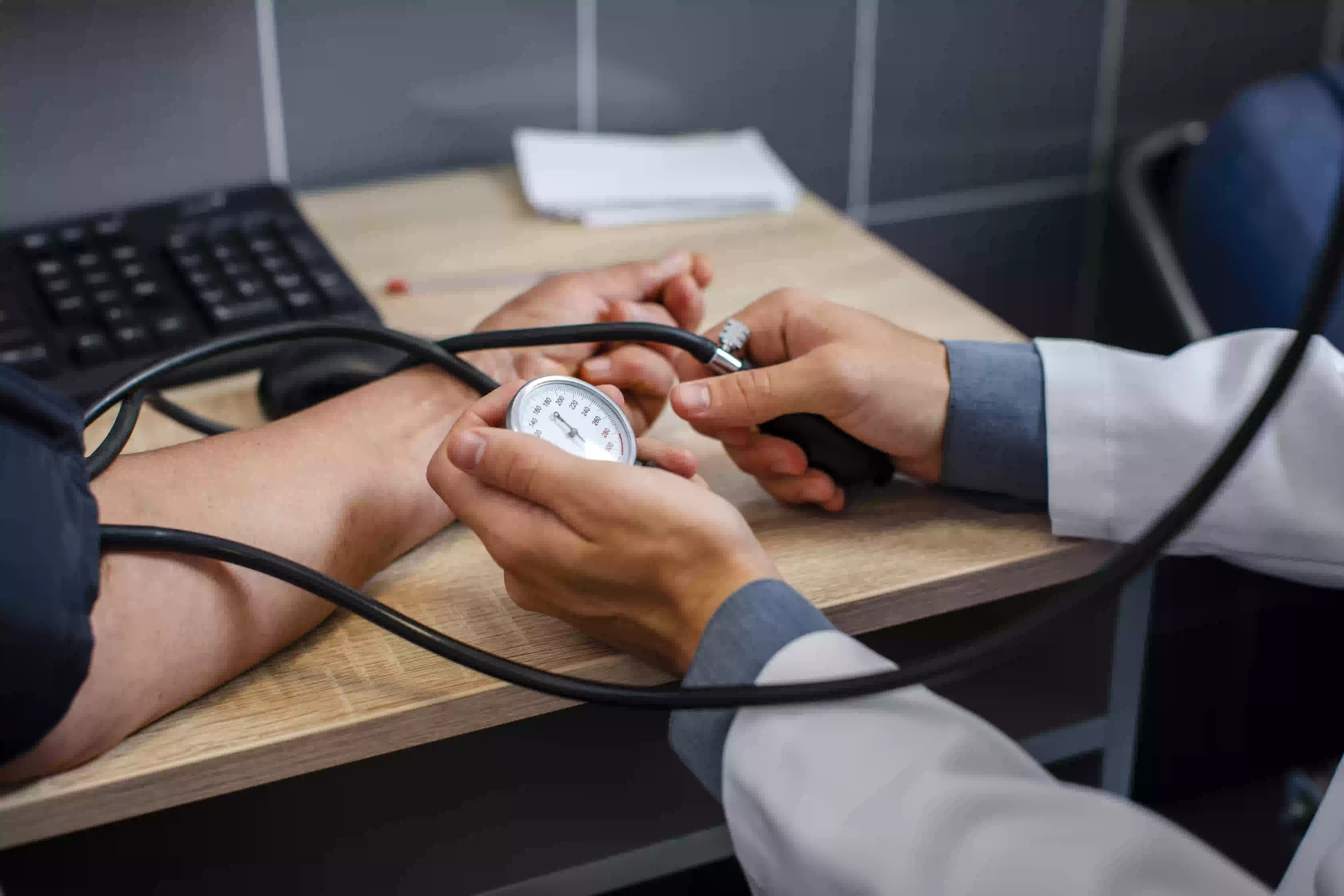Blood pressure can be different depending on your age. A lot of people think high blood pressure is more dangerous than low blood pressure, but actually, both can be risky if not handled properly. That’s why it’s important to check your blood pressure regularly. By doing that, you’ll know early on if something’s off and can take action right away.
What Exactly Is Blood Pressure?
Blood pressure is the force your blood puts on the walls of your arteries when your heart pumps it around your body. Your heart works in two parts—one sends blood to your lungs to pick up oxygen, and the other part sends that oxygen-rich blood throughout your body.
Blood pressure is usually written as two numbers, like 120/80 mmHg:
- The first number (systolic) is the pressure when your heart pumps blood out.
- The second number (diastolic) is the pressure when your heart rests and refills.
It’s usually measured with a tool called a sphygmomanometer—that cuff thing they wrap around your upper arm at the clinic.
What’s a Normal Blood Pressure by Age?
Now that you know what blood pressure is and how to read it, here’s a quick guide on what counts as “normal” depending on your age.
Kids
Kids’ blood pressure isn’t too far off from adults, but it’s still broken down by age:
- Ages 3–5 (preschoolers):
Systolic: 95–110 mmHg
Diastolic: 56–70 mmHg - Ages 6–13 (school-age):
Systolic: 97–112 mmHg
Diastolic: 57–71 mmHg
Teenagers (13–18 years old)
For teens, normal readings are usually around:
- Systolic: 112–128 mmHg
- Diastolic: 66–80 mmHg
This can vary depending on height, gender, and even time of day (morning vs night).
Adults
For most adults, normal blood pressure falls between 90/60 mmHg and 120/80 mmHg. But keep in mind—it can fluctuate depending on what you’re doing. Stress, exercise, or just chilling can all affect your numbers.
Pregnant women tend to have lower blood pressure due to hormonal changes. Even a reading of 120/80 mmHg could be a warning sign for something like preeclampsia.
Seniors (Elderly)
As we age, our blood pressure naturally runs a bit higher. For older adults, it’s considered ideal if:
- Systolic is under 150 mmHg
- Diastolic is under 90 mmHg
That’s because blood vessels get stiffer with age, so the heart works harder to pump blood. But if blood pressure drops too low, older people might feel dizzy or even risk falling.
How to Keep Your Blood Pressure Normal
Now that you know the normal range by age, it’s easier to tell if your numbers are on track. Since both high and low blood pressure can be dangerous, here are some simple tips to help keep it balanced:
1. Eat Healthy, Balanced Meals
Go for a mix of veggies, fruits, lean protein (like fish or tofu), and complex carbs (like brown rice or potatoes). Also, try to keep portions reasonable—not too much or too little.
2. Cut Back on Salt & Saturated Fats
Too much salt can raise your blood pressure, and fatty foods (like fried stuff, thick coconut milk, or fatty meats) don’t help either. Try healthier options like steamed, boiled, or grilled foods.
3. Avoid (or Limit) Alcohol & Smoking
Both alcohol and cigarettes can damage your blood vessels and force your heart to work harder. If you can, reduce or quit over time.
4. Stay Active with Light Exercise
You don’t need to hit the gym hard. A simple morning walk, a bike ride around the neighborhood, or some light home workouts can keep your blood flowing smoothly.
5. Manage Stress in a Positive Way
A calm mind = a healthier body. Try breathing exercises, meditation, yoga, or just listen to your favorite music. And don’t be shy—talk to someone if you’re feeling overwhelmed.
6. Check Your Blood Pressure Regularly
Even if you feel fine, it’s good to monitor it now and then. If you start getting symptoms like dizziness, fatigue, or shortness of breath, don’t wait—see a doctor.
Keeping your blood pressure in check is super important. High blood pressure (hypertension) and low blood pressure (hypotension) can affect anyone—young or old, male or female. If you notice any warning signs, don’t ignore them. Go see a doctor and get the right treatment early.
Sources:
- Nurhaedah et al. (2023). Blood Pressure Checks at the Biraeng Village Office, Minasatene District, Pangkep.
- Alodokter.com – Understanding Blood Pressure by Age
- Pasaribu et al. (2023). Lifestyle and Diet Factors Linked to Hypertension in the Elderly. Media Kesehatan Masyarakat Indonesia.

